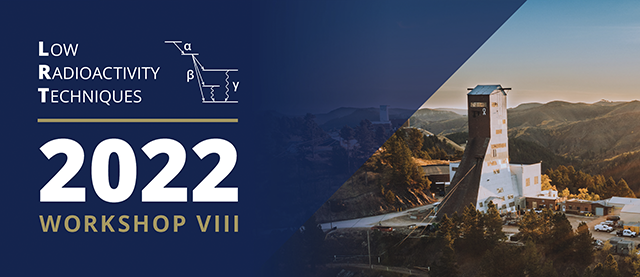Speaker
Description
HPGe detectors made of material enriched in Ge-76 were and are used by many experiments (Heidelberg-Moscow, IGEX, GERDA MAJORANA, LEGEND) for searches of neutrinoless double beta (0vbb) decay. Their main advantage is high detection efficiency (detector = source), high intrinsic radiopurity and excellent energy resolution. In order to achieve high discovery potential of the 0vbb decay, the above listed features must be supported by ultra-low background of an experiment.
One of the most problematic background sources come from alpha decays taking place on the p+ contact of the HPGe detector. They may be caused by decay of Po-210 (T_{1/2} = 138.4 days) deposited on surfaces during the exposure of the detectors to an atmosphere containing Rn-222. If Po-210 is supported by Pb-210 (T_{1/2} = 22.2 years) it may pose practically a constant background source over the entire lifetime of the experiment. Alpha particles passing the dead layer will lose part of their energies and may contribute to the counts in the region of interest.
In order to be able to efficiently reject events induced by alpha decays a dedicated pulse shape discrimination method has been developed. A BEGe-type (point contact semi-planar) HPGe detector was studied, to which artificial neural network (ANN), projective likelihood (PL) and A/E methods were applied. These methods were calibrated and trained on gammas coming from Th-228 and Co-56 sources (single-site and multi-site events used as signal and background samples, respectively) and applied to real alpha events. A high count sample of alphas was obtained by depositing Po-209 on a gold foil, which was then placed on a p+ contact of the detector installed in a vacuum cryostat. About 10^6 alpha events was acquired for the analysis.
The performed analysis showed that the ANN, while effective for single-site gamma events, cannot be used to reject alpha decays because of their single-site nature and short rise times. On the contrary, the PL reduced the alpha activity by more than three orders of magnitude (factor limited by the statistics) while preserving more than 80 % of the events form the double escape peaks (signal-like events from Th-228 and Co-56) and only about 20 % of multi-site events (background-like events). Thus, this method promises to be very effective.
In this talk I will discuss details of the measurements procedures (preparation of the source, data acquisition), performed analyses (training/calibration of the methods, application to the Th-228, Co-56 and alpha spectra, comparison of effectiveness) and plans for further activities.

